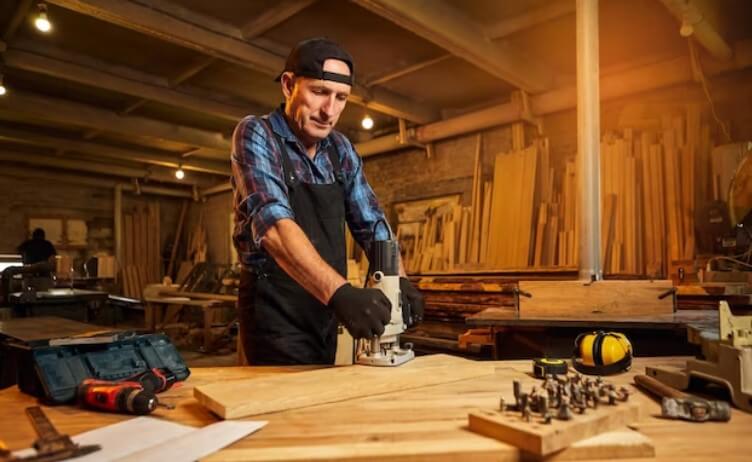A Complete Guide on Wood Screws [Types of Screws]
If you ever visited the fastening area in a supermarket or hardware store, you must know how intimidating the experience can be. I mean, you might only few wood screws, but choosing from a bazillion different types of screws can give you a tough time. Well, here I will give you the necessary ideas about the most commonly used screws in woodworking, along with answers to some popular questions. So get ready to dive with me.
Use of Screws
The basic purpose of screws in woodworking is to hold objects or wood pieces together. The head of the screw allows being turned and penetrating the wood piece. However, in many cases, woodworkers prefer glue to attach two pieces, although the importance of screws can’t be denied.
The screw is powered by the screwdriver, which converts the rotational power into force and pushes the screw downwards. You can also use power drills for this purpose if the screws can take it.
Anatomy of a Screw

Before diving into a dip, let’s have a look at the different parts of the screw that will help you to make any decision:
Drive: drive is the mechanism of a screw that helps to install and remove the screws. The most commonly used drives shapes are the cross-head, square, star, slotted, and hex socket.
Head: the head is the top of the screw that includes the drive. Different types of screw heads include Slotted, Square or Robertson, Trox or Star, etc. another popular form of screws is Flat-headed screws with a tapered head, ideal for countersinking.
Shank: shank is the smooth area of the fastener between the head and thread. Depending on the type, some screws might not have any shank.
Thread: thread is the ridge that wraps around the cylinder and forms a helix.
Tip: the tip is the end of a screw.
The Basic Type of Screw
Depending on the shank and use, screws can be divided into three types-
Machine Screws
Features
- Machine screws included fully threaded shank
- These types of screws are smaller than average screws and are used with nuts
- Ideal for existing tapped hole.
General Overview
Machine screws- also known as machine bolts, are different from others because of overall size, the shape of the head, slot type, length, material, and thread type. These screws are usually smaller than average screws and length ranges up to ¾ of an inch (19.05 mm). since these screws are designed to fasten existing holes,
the two main drives associated with them are slotted (flat head) and Phillips. However, some specialized drives of a screw can also be included in the list like Torx – six-pointed, spanner, trident, etc.
Typically machine screws can come with either clockwise ((right-handed) or counter-clockwise (left-handed) thread.
Sheet Metal Screws
Features
- Fully threaded shank
- A very versatile fastener and appropriate for metal, wood as well as plastic.
- Most of them are self-tapping screws and require a pre-drilled hole, while some come with self-drilling tips
- The sharp thread allows cutting through the material from its internal thread.
General Overview
The advantage of sheet metal screws is it has a fully threaded shank and sharp tip that allows cutting through any metal wood and plastic. The size of this type of screw is usually described by some number representing diameter, thread count, and length. For example, if a screw is listed as 4-32 x 1-½”, then its diameter is 4, thread per inch is 32 and length is 1-½”.
The two basic types of screws are self-tapping screws and self-drilling screws. While self-tapping screws can cut through the metal but requires a pre-drilled hole to be used, self-drilling screws have the drilling tip and do not require any pre-drilled hole. The head of this screw comes in different shapes, pan or round shaped or flat or oval-shaped, and the most common drives are Phillips, flat, or combo drives. They are made of carbon steel and are typically the most economical.
Cap Screws
Feature
- Usually used without nut
- Available in both English and metric sizes
- Ideal for machine parts- home appliance/electronic device
- Has a large head and diameter is larger than the threaded part.
General Overview
Cap screws are made out of metal alloy, stainless steel, and carbon steel. This type of screw generally has a larger head than the threaded portion. As a result, it can go directly into the tapered hole, provide a positive mechanical stop, and generate high clamping force. Its head style includes a hex head, socket head, and button head.
Screws Common for DIY
Wood Screws

wood screws are probably the most commonly used screws for DIY screws. Although it is known as wood screws, it is not made of screws. Rather they connect two-piece of wood. This type of screw has a semi-threaded shank and is available in different sizes and lengths with a sharp tip that allows penetrating through wooden plank, thus making them truly useful for DIY crafts.
Pocket Hole Screw

Pocket hole screws are the perfect choice for building furniture and cabinet. It requires a pre-drilled hole to fasten two pieces of wood.
These holes hide the screws and are used with pocket hole jigs. They provide secure joints. This type of screw has a self-tapping tip, and pilot holes are not necessary.
Since pocket hole screws are hidden in the predrilled pocket hole, it should be strip proof, and its square drive provides that support. In addition, the flat, washer-style head of the pocket hole screw provides a cushion on the wood, which helps to avoid over drilling and countersinking.
Drywall Screw

Drywall screws directly fit drywall with wood. The coarse thread and flat tip allow for countersinking under the surface immediately after finishing the work. It also provides a better grip than drywall nails.
The size of drywall screws varies, and You have to choose the right one depending on the thickness of the drywall. For example, for 1/2-inch-thick drywall, you can use 1-1/4-inches screws; for 5/8-inch-thick drywall standard screw size is 1-5/8-inches. The size of the screw is so important because it ensures the screw will go through the drive at least half of the thickness to provide the necessary strength.
Deck Screw

Deck screws are perfect for outdoor use, like making outdoor furniture, window boxes, planters, etc., and are generally made of stainless steel to avoid corrosion. To avoid stripping, it is better to choose a star head to handle a high level of torque transfer, force, and speed produced by a power drill.
Masonry Screw

Masonry screws are the perfect choice for fastening materiel with concrete, mortar, or brick joints; however, you have to create a pilot hole before with a carbide bit and hammer drill. The two types of heads for masonry screws are flatheads for countersinking and hex washer heads that sit on top of the material’s surface.
Apart from these, there are some other kinds of screws popular for different purposes like-
Stainless Screw

Stainless screws are designed to be used on many materials, including wood and sheet metal. Stainless screws are galvanized with a rust-resistant layer of zinc. The main advantage of this is it keeps these types of screws corrosion-free and perfect for both indoor and outdoor furniture, even in damp conditions; however, coating eventually wears off in case of outdoor use.
This type of screw comes with a range of head types and drive types.
Multipurpose Screw

As the name suggests, The multipurpose screw is used for different purposes and on a variety of materials, including hardwood, chipboard, MDF, etc. these hardened, yellow zinc plated, multi-purpose screws have the deep X recess that is ideal for power drilling while the single finely tuned thread cut into the deeper of the material and provide a stronghold.
Type of Drive

Slotted: slotted screws are the most common and simplest type screws with a single slot at the head. Although they are not compatible for heavy use, they are still around. The driver bits are usually measured by the width of the blade in inches like 1/16, 1/8, 1/4, 5/64, 3/16, 3/32, 5/32, and 9/32.
Phillips: the Philips screws, which are named after Henry F. Phillips, was designed in such a way that the screwdriver comes out if too much torque is there. It is an intentional engineering point to protect the screws from breaking down that was introduced at the beginning of the 20th century.
Square: The square head screws, also known as Robertson, were invented by Peter L. Robertson. This is the most common type of screw used in Canada as well as in the USA. It is very popular among the woodworkers because it is superior then Phillips since It allows the driver to go in deep and supports more torque than Phillips. In addition, its shape and depth allow 4 points to contact; thus, the driver does not pop out even after much torque. Some common brands of Squarehead screws are Backer On, Spax, etc.
Trox: trox was first developed in 1867 in the USA. It is similar to a square screw, but instead of 4, this type has six corners, and this is why it is also known as a star or hex screw. Like the square, it also allows the user to generate more torque, and the driver does not pop out; however, the head can break off with much force. This advantage of torque comes in handy when the woodworkers deal with dense wood like maple. Although, on the other hand, it is less dense wood like pine, this type of wood is a good choice to attach two pieces and countersinks. If you want to buy this type of screw, I would suggest focusing on its advantages rather than the price because it is worth the money.
FAQ
What kind of screws goes into wood?
Wood screws are meticulously designed and made of metal and thus have a sharp tip that allows them to be pushed inside a wooden plank. Wood screws are usually made of brass, bronze, or other kinds of metal. Generally, steel screws are widely used for DIY craft -both interior and outdoor since they are available in different sizes, affordable, and strong.
How to join two pieces of wood with screws
If you want to join to connect two pieces of wood, you first have to understand the depth of the wood plank and then choose the screws. If the screws are too long, they will come out of the other end, thus ruin the finish. On the other hand, if it is too short grip won’t be strong enough. So, calculate the length as well as the depth of the objects.
How to remove stripped screws from wood?
Removing stripped screws requires some technics.
Using a rubber band, machines or pliers can solve the problem of removing stripped screws. For more details, feel free to visit How To: Remove a Stripped Screw.
Are Nails Used in Woodworking?
Nails are small metal-made objects often used for woodworking or construction. For example, nails can be used as a fastener and a peg for hanging something or even as decoration pieces. The most commonly used nails for woodworking are – Brads, Clouts, Wrought or Roseheads, Headless nails, and pins.
Please go through Nails for Woodworking for more.
What’s the difference between a screw and a bolt?
The main difference between screw and bolt is that screw is a tapered fastener that mates with the existing thread or thread in any object. On the other hand, bolt a non-tapered fastener that uses a washer and bolt to hold the object together. Bolts rotate into matching nuts to be secure, while typical screws work on their own.
What is the difference between a drywall screw and a wood screw?
Drywall screws are the ideal choice for attaching wallboard to studs, while wood screws are for wood. Drywall screws are made of hardened steel, and during the installation, the shaft might snap, especially if they are used against hardwood. Unlike drywall screws, wood screws are made of a relatively soft metal-like combination of metal and other materials that make the snap resistant. Another difference is that wood screws come with various head styles, while a drywall screw has a bulge or flathead.
What is the difference between a wood screw and a timber screw?
The most visible difference between them is in the thread. Wood screws have a measurement of length which depends on the gauge. It also determines the size of the screw. Timber screws length measurement ranges from half an inch to 3 inches.
What screws to use for pine?
Pinewood or spruce are known as softwood. Since they are not dense, they require screws with depth and aggressive thread that will make the fiber together. Coarse Kreg Screws work a great choice for these woods and are ideal for plywood and MDF.
What screws to use on plywood?
Plywood is made of thin layers of wood attached with strong adhesive. So it is not that difficult to put screws; however, you have to be careful not to break the layers. For plywood, the length of the screw should be twice the thickness of the workpiece, and it should be made of steel, not any softer material. There are varieties of plywood available on the market. Choose the best one according to your necessity.
Closing Notes
screws have an undeniable role in woodworking. Although many carpenters prefer to use adhesive, still now screws have their role, which can’t be replaced. There are lots of varieties available in the market, and it isn’t very clear to choose the right one. In the beginning, I promised to give you a general idea about the most commonly used screws, and I hope you have at least the general idea. If you have any more queries feel free to go through our article available on the website. I hope you won’t be disappointed.
Table of Contents

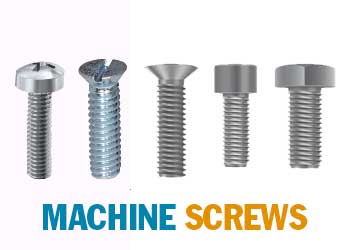
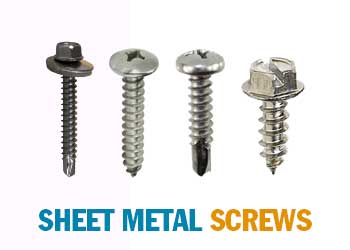
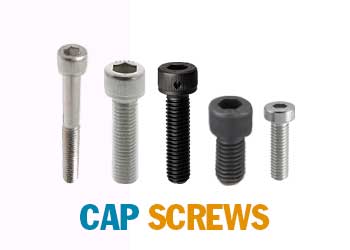
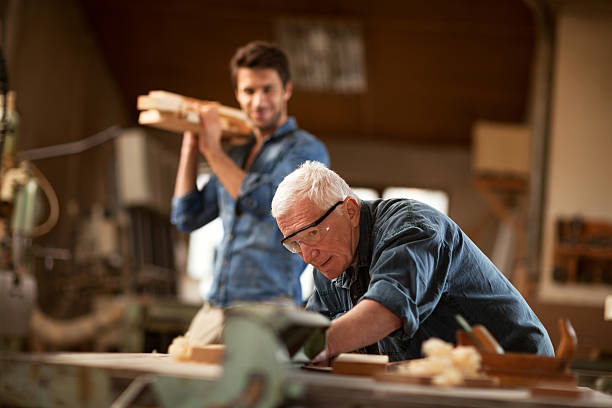
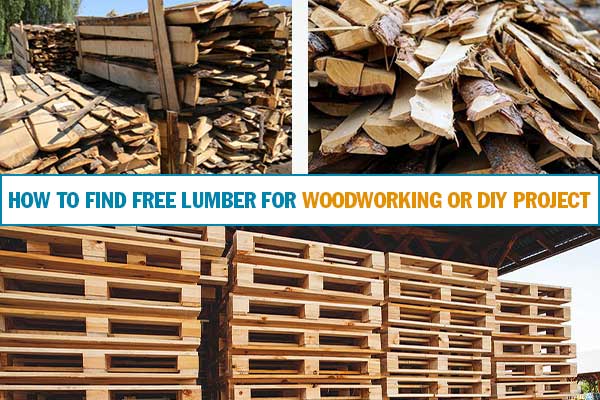
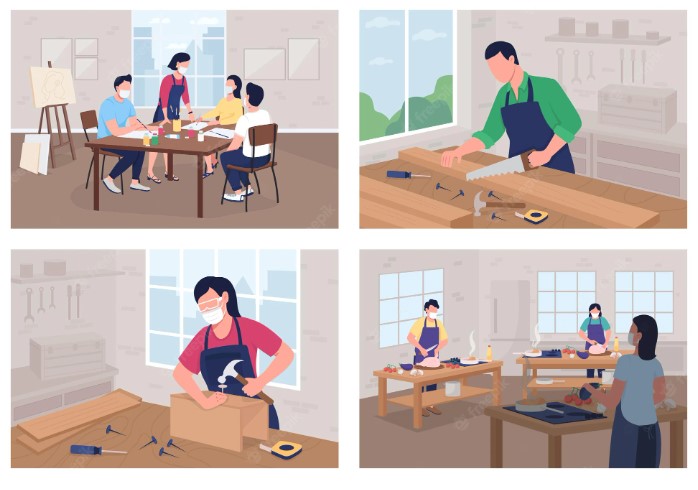
![Best Woodworking Books for DIY, Carpentry & Woodworker In 2024 [Updated Version]](https://woodworkingarena.com/wp-content/uploads/2019/07/Great-Woodworking-Books-768x476.jpg)

